Song Phi Nong, Phetchaburi, Thailand
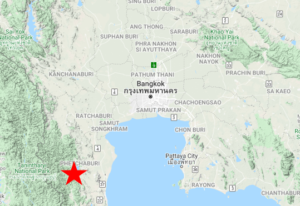
Along the eastern periphery of Kaeng Krachan National Park, where the land is a patchwork of park and private property, many of Kaeng Krachan’s birds can be seen better, more easily, and more comfortably than within the park itself. This is due to the initiative of local residents who recognized an opportunity and built observation hides in the dense brush, then maintained them by setting out water and food that attract a parade of shy and spectacular birds that are usually difficult to observe, including Gray Peacock-Pheasant, Kalij Pheasant, Bar-backed, Scaly-breasted, and Ferruginous Partridges, Eared and Blue Pittas, and Common Green-Magpie.
Orientation
Directions
Song Phi Nong is on the eastern edge of Kaeng Krachan National Park, about two and a half hours’ drive (190 km) southwest of downtown Bangkok, in the hills west of Phetchaburi.
From Bangkok, take Route 35 west for 85 km, where it feeds into Route 4. Take the southbound exit toward Phetchaburi then proceed 21 km and exit onto Route 3349 westbound. After 17 km, turn south onto Route 3510, then follow the signs to the park. After a further 36 km, bear right at two forks onto Route 3432.
After 5 km on Route 3432, as you reach Wat Nong Puen Taek, bear right onto the dirt road to go directly to Baan Maka Nature Lodge.
Alternatively, if you continue straight at Wat Nong Puen Taek, 7 km farther along Route 3432, you will reach another fork where the left would take you to the park entrance, and the right takes you into Song Phi Nong from the southwest, to arrive directly at Ban Song Nok.
Birdfinding
East of the entrance to Kaeng Krachan National Park, Route 3432 winds northeast through a patchwork of farms, brushland, and deciduous forest and runs along the edge of a reservoir (named Kaeng Krachan) to the park headquarters. The distinction between park and private property is not easy to discern; the road crosses the boundary a few times and is never more than 2 km from it.
[Note: The area covered here is generally within the district of Song Phi Nong. Although that name rarely appears in reports, it seems to be the clearest way to refer to this site as a whole without singling out any particular property.]

Common Green-Magpie is one of the gaudiest birds that regularly visits the hides at Song Phi Nong. © Ayuwat Jearwattanakanok
Song Phi Nong has become an ancillary destination for visitors to Kaeng Krachan due to the emergence of a small-scale ecotourism cottage industry in which some of the residents have constructed bird observation “hides” (a.k.a. blinds) and set out birdbaths and food to attract birds, with great success. Each hide has limited seating, reserved in half-day increments, usually on a per-person basis unless a group has simply reserved the whole hide. The overall capacity of this hide network is usually enough to meet demand, but there may be occasions when no space is available—in which case the best alternatives would be to visit the park or one of the properties.
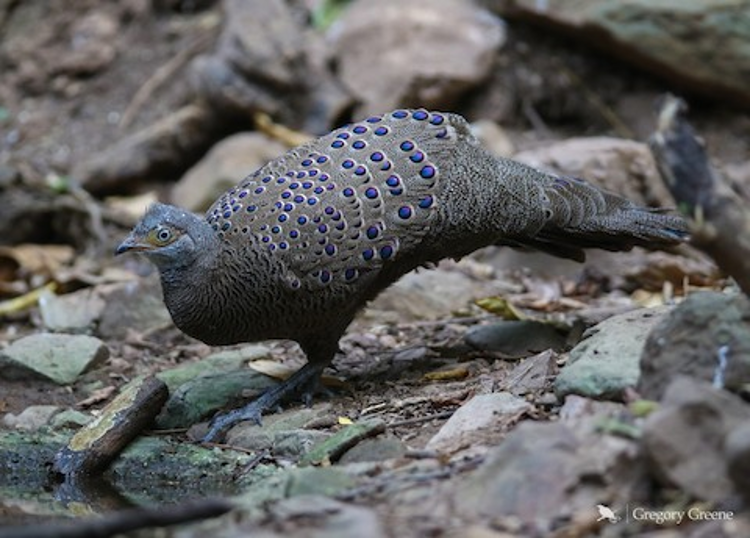
Gray Peacock-Pheasant at Song Phi Nong. © Gregory Greene
There are several small lodges and guesthouses that cater to park visitors. The best known are Baan Maka Nature Lodge and Ban Song Nok. Each of these properties has its own hide on-site, and there are a handful of other hides that are not associated with a guesthouse. The best-known of these is Lung Sin, but others have been established, at least from time to time. Visits to the latter set are harder for foreign visitors to arrange independently, but the owners of Baan Maka have been generous in making such arrangements upon request.
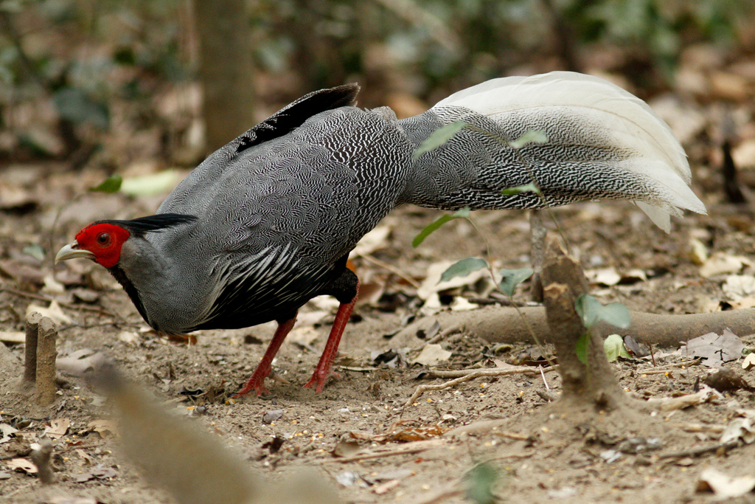
Male Kalij Pheasant at Song Phi Nong. © Julien Renoult
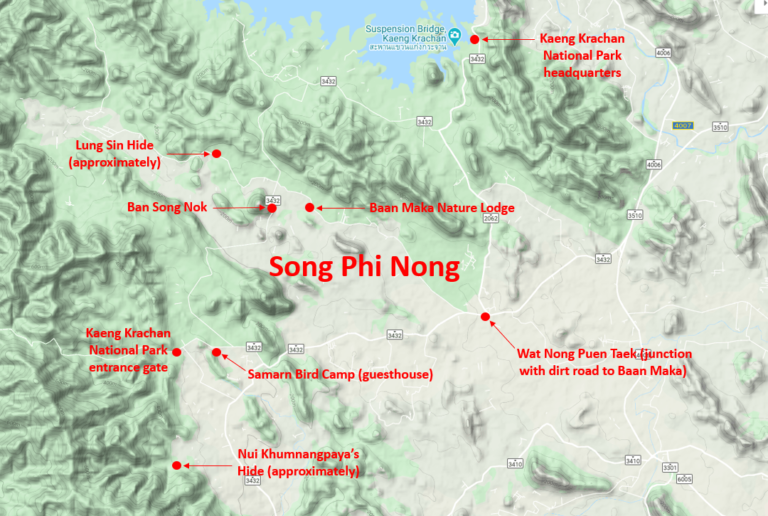
Hide Etiquette: Anyone who visits a hide at Song Phi Nong should observe two cardinal rules.
Rule #1, be as close to silent as possible and avoid any disruptive movements: i.e., don’t scare the birds, and don’t degrade the experience of other visitors.
Rule #2, pay for the privilege—these hides require a lot of time and effort to establish, and this merits compensation. On visits to the independent hides, the typical arrangement is for its owner to arrive and tap your shoulder. You pay the current fee (200 baht in 2020), while also observing Rule #1.
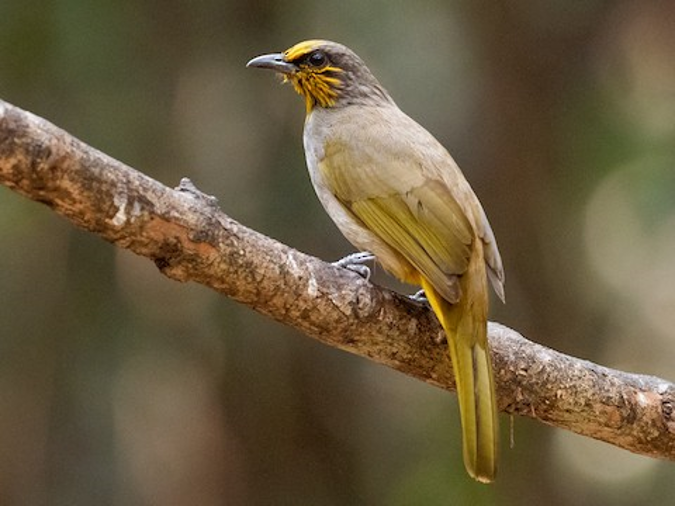
Stripe-throated Bulbul at Song Phi Nong . © Mollee Brown
Baan Maka Nature Lodge: The largest ecotourism property in Song Phi Nong, Baan Maka is a well-tended guesthouse with several cabins, a restaurant, an attractive garden, a marshy lake, and a 1-km nature trail on-site, located about 15 minutes’ drive (10 km) from the entrance gate to Kaeng Krachan National Park. Those who are interested in visiting should consult its website, and the summary at ThaiBirding.

White-browed Scimitar-Babbler at Song Phi Nong. © Tim Avery
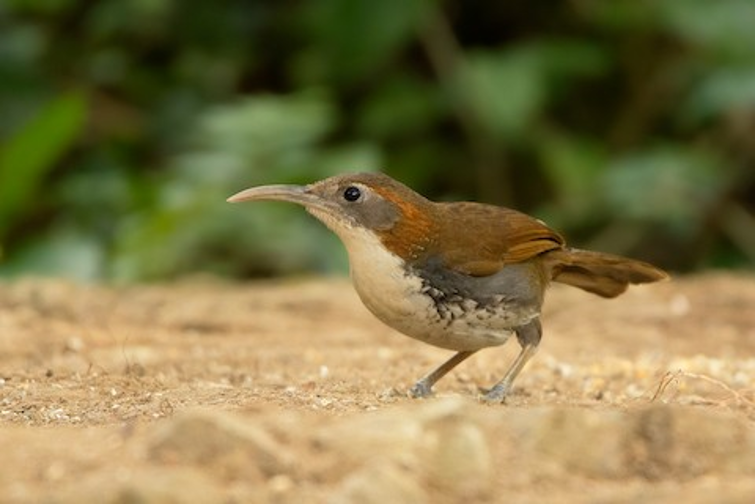
Large Scimitar-Babbler. © Ayuwat Jearwattanakanok
Its grounds combine a diverse set of microhabitats that make the property one of the best places for birds in the vicinity of Kaeng Krachan, with highlights that often include: Red Junglefowl, Banded Bay Cuckoo, Collared Scops-Owl, Brown Boobook, Large-tailed Nightjar, Oriental Pied Hornbill, Common Flameback, Blue-winged Pitta, Bar-winged Flycatcher-Shrike, Black-hooded Oriole, Greater Racket-tailed and Hair-crested Drongos, White-rumped Shama, Puff-throated Babbler, Large Scimitar-Babbler, Greater and Lesser Necklaced Laughingthrushes, Orange-headed Thrush, Orange-bellied Flowerpecker, Little Spiderhunter, and Golden-fronted Leafbird.
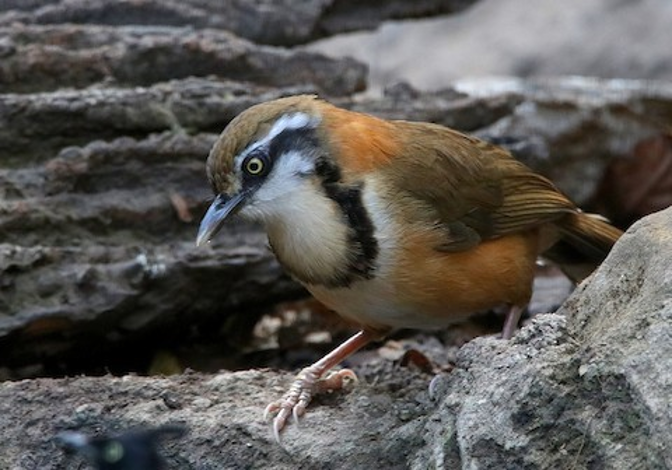
Lesser Necklaced Laughingthrush at Song Phi Nong. © Tim Avery
Ban Song Nok: Ban Song Nok is a small guesthouse with a garden and hide, located at the base of a large haystack hill about 10 minutes’ drive (8 km) from the entrance gate to Kaeng Krachan National Park. The owner, Auntie Ek, pioneered the local ecotourism enterprise that draw visitors to Song Phi Nong. Her property attracts many of the same birds found at Baan Maka, and the hide is good for: Bar-backed and Scaly-breasted Partridges, Red Junglefowl, Kalij Pheasant, Greater and Lesser Necklaced Laughingthrushes, and Siberian Blue Robin, with Gray Peacock-Pheasant and Red-legged Crakes occurring sporadically.

Greater Necklaced Laughingthrush at Song Phi Nong. © Tim Avery
At Ban Song Nok and along the roadside for about 500 m south, mixed flocks of starlings can often be found, particularly in the late afternoon as they assemble to roost for the night. In addition to the abundant Common and Great Mynas, these flocks often include several less common species: Black-collared, Vinous-breasted, Chestnut-tailed Starlings. Spot-winged also appears to occur here annually in winter.

Bar-backed Partridge at Song Phi Nong. © Ian Davies
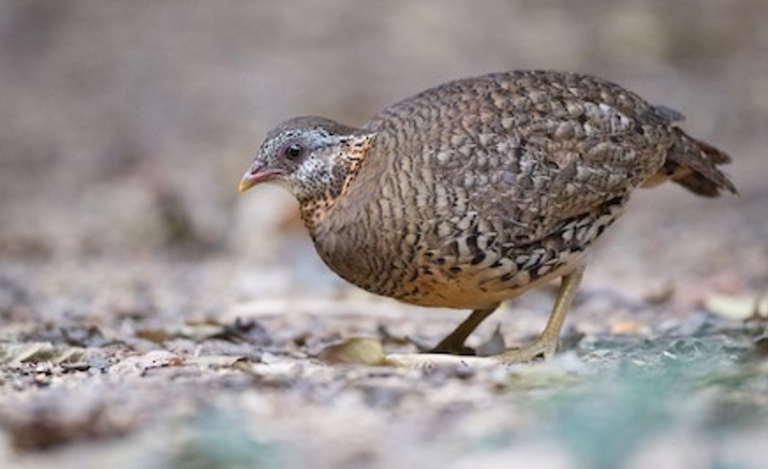
Scaly-breasted Partridge at Song Phi Nong. © Ian Davies
Lung Sin: An extremely productive hide that is not associated with a guesthouse is located beside the road west of Baan Maka and Ban Song Nok—prospective visitors should inquire at one of these guesthouses for precise location details and to schedule a visit. The focus of attention is a small birdbath in the midst of dense brush that otherwise lacks water during much of the year.
Regular species include: Bar-backed, Scaly-breasted, and Ferruginous Partridge, Red Junglefowl, Kalij Pheasant, Black-naped Monarch, Common Green-Magpie, Racket-tailed Treepie, Bronzed Drongo, Large Scimitar-Babbler, Puff-throated and Abbott’s Babblers, Greater and Lesser Necklaced Laughingthrushes, and Siberian Blue Robin. Less frequent, but still regular species include Gray Peacock-Pheasant, Slaty-legged Crake, Besra, and Gray-headed and Streak-breasted Woodpeckers.
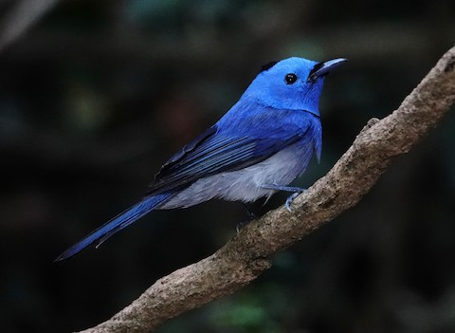
Black-naped Monarch at Song Phi Nong. © David Diller
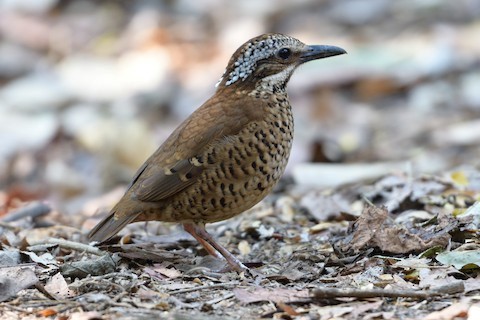
Eared Pitta at Song Phi Nong. © Khemthong Tonsakulrungruang
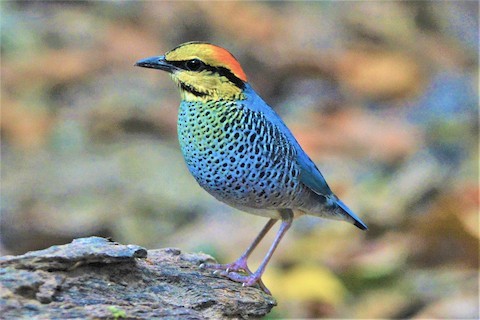
Blue Pitta at Song Phi Nong. © David Hollie
Nui Khumnangpaya’s Hide: About 5 km south of the entrance gate to Kaeng Krachan National Park is another privately operated hide that has a history of attracting both Blue and Eared Pittas, in addition to several of the species regularly seen at the hides discussed above. It is especially consistent for Scaly-breasted Partridge, Asian Emerald Dove, Gray-headed Woodpecker, White-browed and Large Scimitar-Babblers. Lesser and Greater Necklaced Laughingthrushes, and Siberian Blue Robin.
Services
Accommodations
As described above, Baan Maka Nature Lodge and Ban Song Nok both provide accommodations tailored to the interests of visiting birdwatchers.
Just a few hundred meters outside the park entrance gate, Samarn Bird Camp (email: nuchanat@set.or.th) is a moderate-to-budget-priced guesthouse that caters to those who would like to visit the park but also sleep in a bed. It also provides access to the sites at Song Phi Nong.
Food
The guesthouses listed above serve food.
Notes
When to Visit
Kaeng Krachan National Park closes each year for the months of August, September, and October, which surely must suppress visitation to Song Phi Nong. However, if you travel to Thailand during this time and would like to search for some of the birds, it would be worthwhile to inquire about the status of establishments such as Baan Maka.
Links